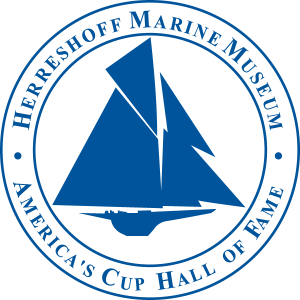
Editor’s note: Our friends at the Herreshoff Marine Museum & America’s Cup Hall of Fame in Bristol, Rhode Island are celebrating their Golden Jubilee year – the 50th anniversary of the museum’s founding, and WindCheck is honored to be the official Jubilee Media Partner.
We’re changing course for this month’s Golden Jubilee feature with a look at a few of the museum’s countless archival images. Most of the photographs shown here appeared in The Chronicle, a paper newsletter published by HMM between 1979 and 2001 and an important piece of HMM’s own history. The Chronicle comprised museum news and updates as well as lengthier articles by HMM curators and staff, guest researchers, writers, photographers, and Herreshoff family members, owners and sailors.
On the occasion of HMM’s 50th anniversary year, HMM is pleased to present “30 Chronicles: the Collected Newsletters of the Herreshoff Marine Museum” in a digitized and searchable format on the museum website at herreshoff.org/library/the-chronicle-archives/
Special thanks to HMM Curator Evelyn Ansel for exceptional assistance with this piece.
The Herreshoff Marine Museum is located on the grounds of the former Herreshoff Manufacturing Company where more than 2,000 yachts were built over more than six decades, including eight consecutive America’s Cup defenses between 1893 and 1934. To learn more, log onto herreshoff.org.
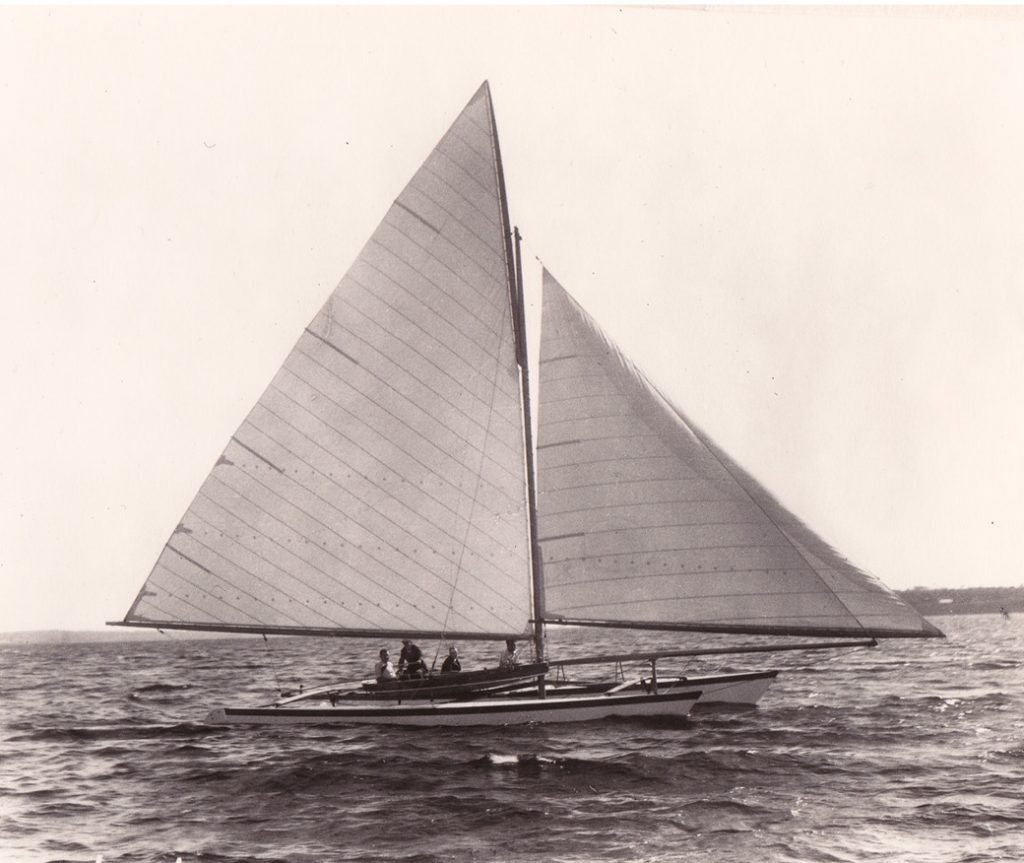
Amaryllis II sailing in Bristol Harbor, 1933
Amaryllis II, a 1933 near replica of the revolutionary 33 ft. catamaran designed by Nathanael G. Herreshoff in 1876, has been placed on display at the Herreshoff Marine Museum under a loan from the Henry Ford Museum.
Soon after her construction at the Shop, the original Amaryllis was sailed by Captain Nat 200 miles from Bristol to New York in the remarkable time of 14 hours. There he entered her in the Centennial Regatta and beat all comers with this radical sailing machine.
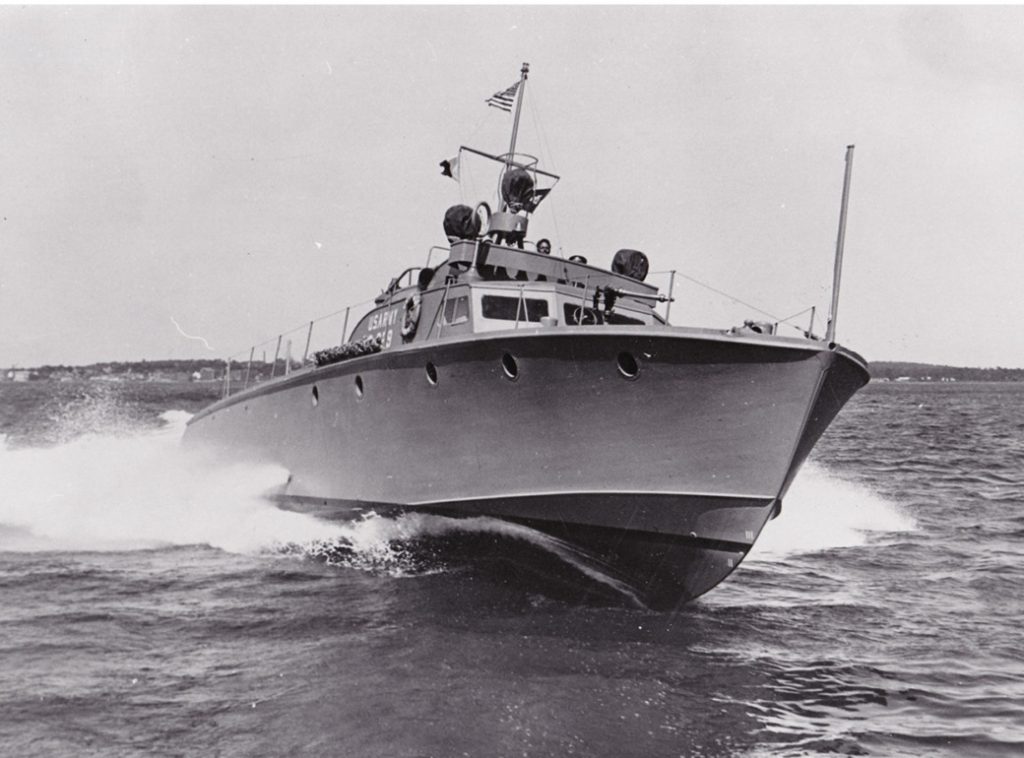
Air Sea Rescue Boat built by the Herreshoff Manufacturing Company 1943
During World War II the Herreshoff Manufacturing Company constructed vessels for U.S. Army and Navy. One of the types was an 85’ air sea rescue boat.
The keel and frames were of oak and the hull was double planked mahogany. The decks and cabins were of marine plywood. Power was provided by two 1550 H.P. Packard marine gasoline engines. A large rudder was set behind each propeller which gave the boat excellent response and easy handling in close quarters.
The America’s Cup year of 1983 marks the 80th anniversary of Reliance, the unique America’s Cup Defender of 1903. She was the largest of the many yachts that my father, Nathanael G. Herreshoff, designed for defense of the Cup and is the largest single-sticker ever built.
…About a week after the launching, I along with my brothers Sid and Nat Jr. (all of us teenagers) accompanied our father and the afterguard of Reliance on her trial trip…On the way back from Block Island, the wind picked up to 20-25 knots. The log was put over to measure Reliance’s speed at 17 ½ knots (more than 20 miles per hour). Spectator power boats could not keep up with us.
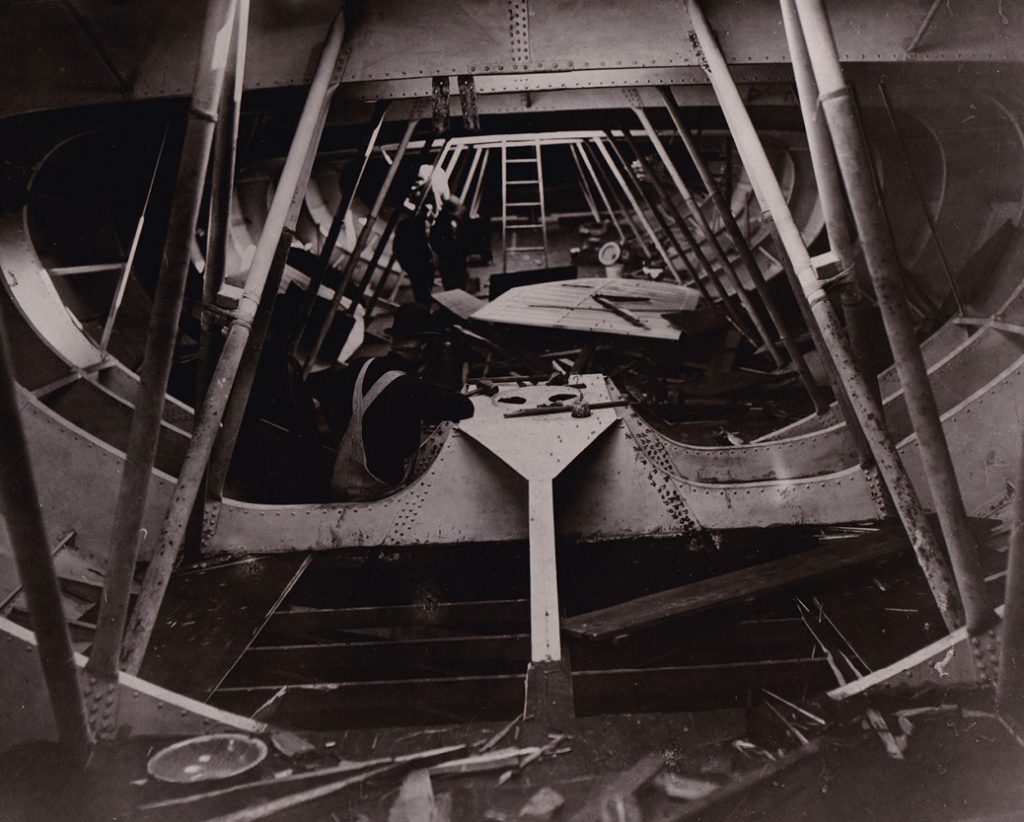
Reliance interior
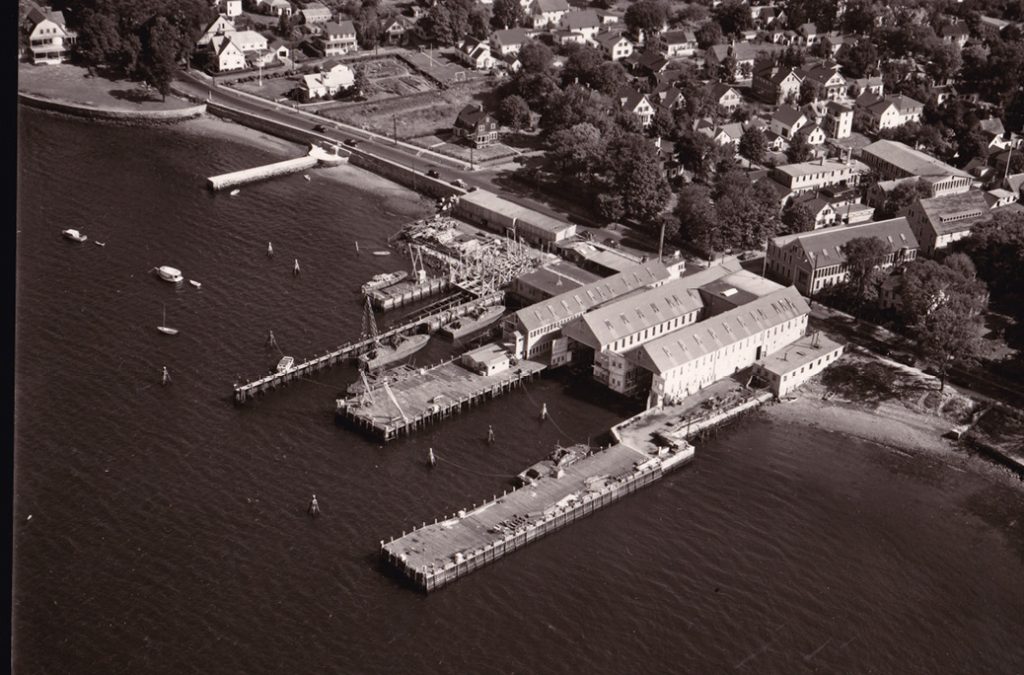
The Herreshoff Shop on Bristol Harbor, circa 1936
In the early 1900s the facilities and work force of the Herreshoff Manufacturing Company were at their peak. The principal yachts were constructed in the North & South Shops along the shore of Bristol Harbor. Activity in the other buildings produced components.
…Later, steel masts were also built on the pier. Rivets were inserted and backed from the inside for pounding over on the outside. A small boy with cotton in his ears worked inside; he had a line tied round him in case he couldn’t get out on his own.
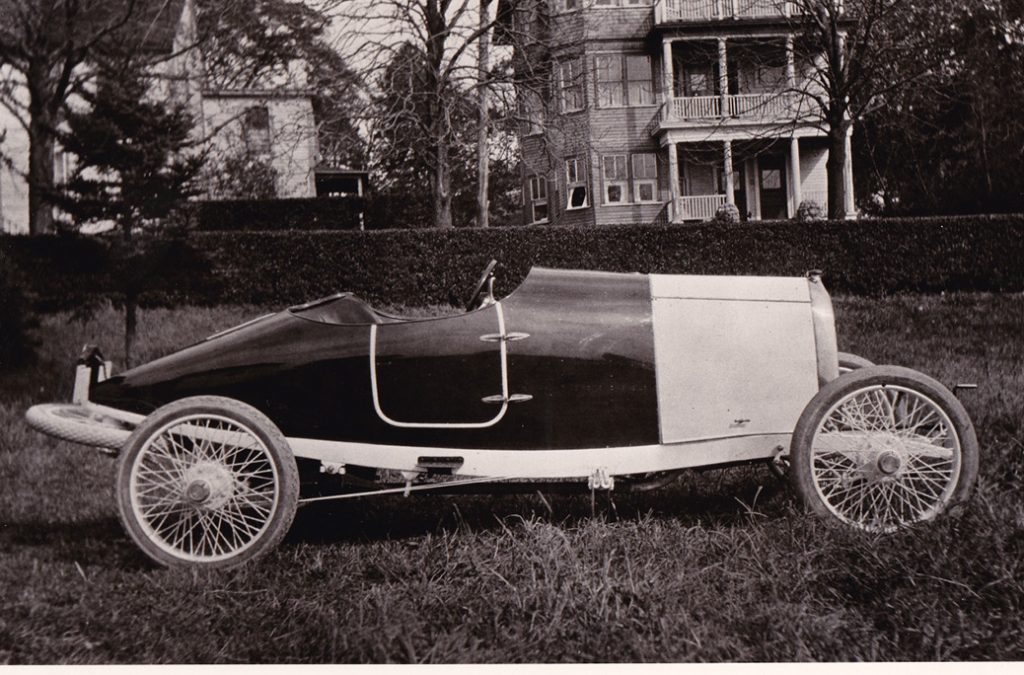
The 1916 Herreshoff Novara was the McLaren Speedtail of its day.
A. Sidney DeWolf Herreshoff (1886-1977), a yacht designer working under his father, Nathanael G. Herreshoff, had an idea in mind for a commercially built sports car.
The price of the special design sports car was $2,750.00 f.o.b. Bristol. Considering that a Ford runabout was selling for about $345.00 at this time, the Novara customer was paying a good deal for the car’s “unexcelled comfort, extraordinary acceleration, and responsiveness.”
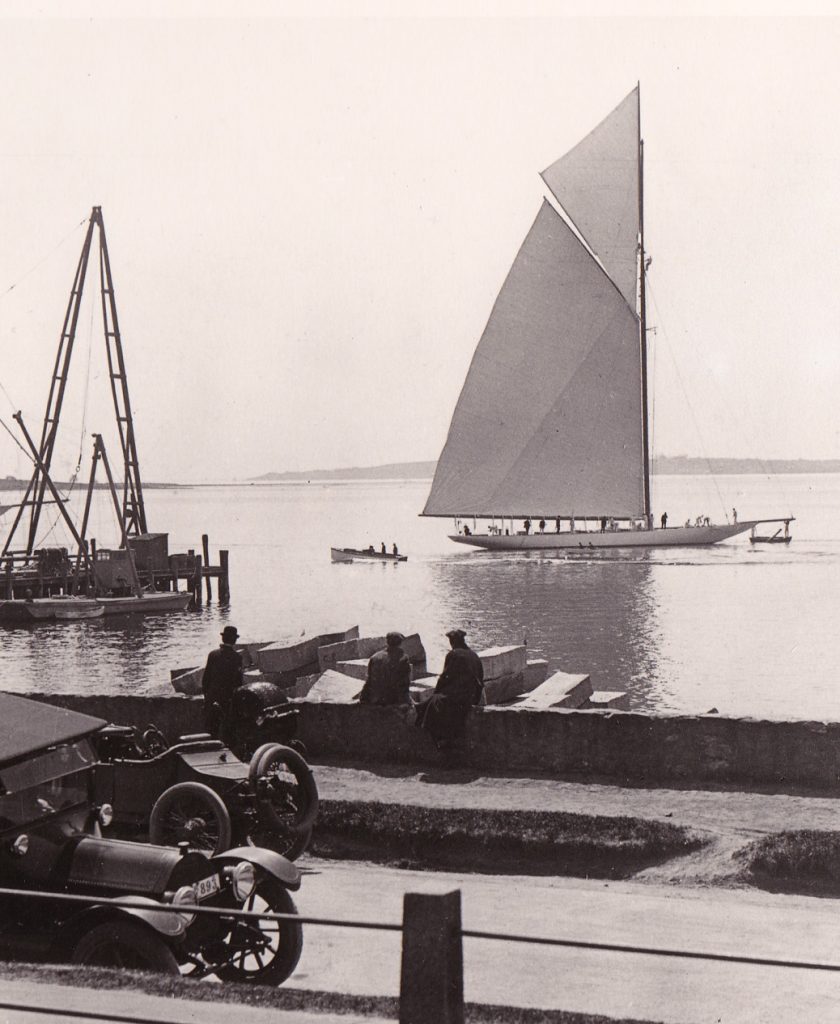
Pictured shortly after her launch in 1914, Resolute was the last America’s Cup defender to be designed and built by Herreshoff.
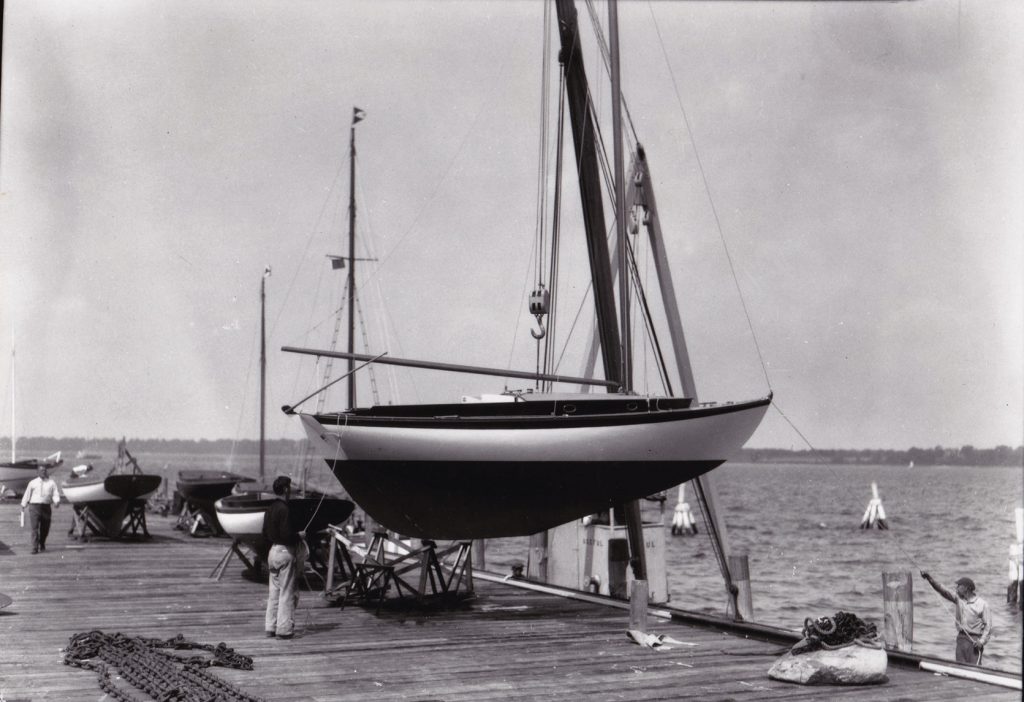
Marlin Auxiliary Cruiser being launched for delivery, c. 1939
… The Fish Class was introduced at Oyster Bay, New York in 1916 when 23 boats were delivered to members of the Seawanhaka Corinthian Yacht Club, each named for a different species of fish.
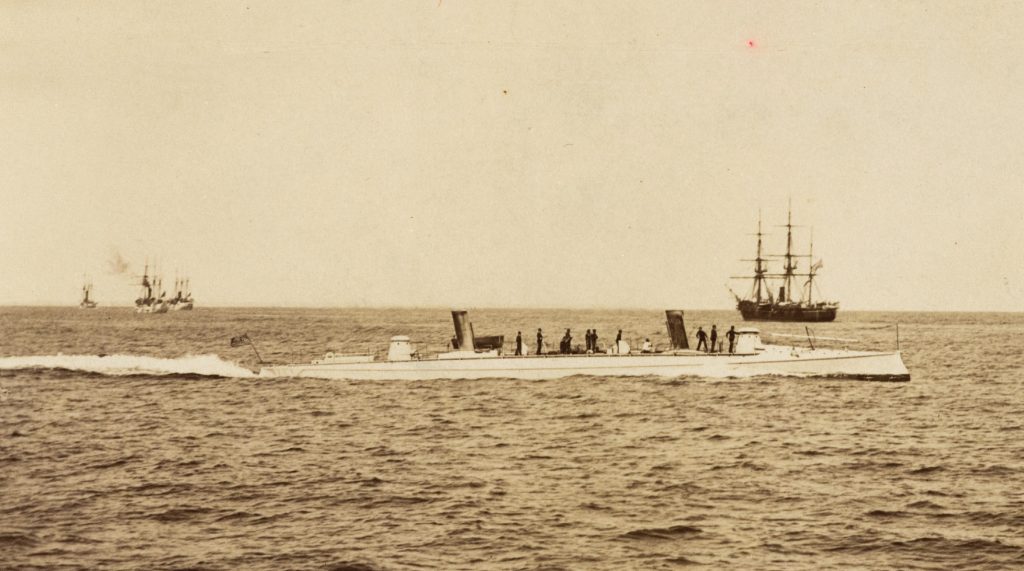
Cushing: U.S. Navy Seagoing Torpedo Boat Number 1 in 1890 © Historic New England
Designed and built in Bristol, the U.S.S. Cushing was the U.S. navy’s first seagoing torpedo boat. During the summer of 1897, the 137-foot Cushing set a new record by launching more than 400 self-propelled torpedoes. ■
